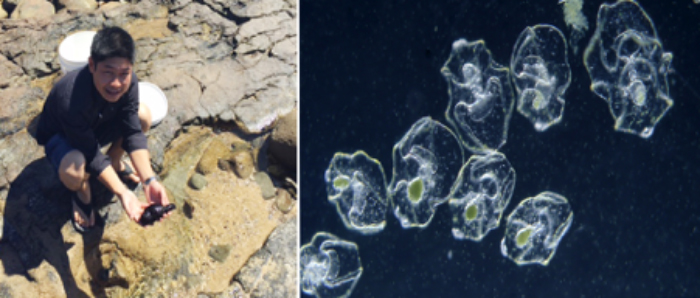

Sea cucumber research advancing hatchery production using neurohormones to stimulate spawning, TropAg
November 13, 2017
The Crawford Fund has generously partnered with TropAg2017 to assist 10 young researchers from developing countries attend and present their science at this international conference which will be held in Brisbane from 20-22 November 2017. Successful candidates were chosen by a selection panel made up of representatives of The Crawford Fund and the TropAg2017 conference organisers, based on submitted abstracts of their research.
In the lead-up to the conference we will be publishing short blog posts written by the young researchers about their work.
By Chieu Hoang Dinh, University Of the Sunshine Coast
Chieu Hoang Dinh, from the Research Institute for Marine Fisheries (Vietnam), a PhD student who is currently studying in the Genecology Research Centre, University of the Sunshine Coast (USC), Australia, was awarded a Crawford Fund scholarship for TropAg2017 conference registration and attendance. His oral presentation is: “In-vitro oocyte maturation by radial nerve extract and fertilization of the black sea cucumber Holothuria leucospilota”.

Sea cucumbers are commercially important species due to their value in medicine and food. They have been used as a treatment of gastritis and stomach ulcers, anemia, nervous breakdown, lack of libido in men and backache, amongst other things. Due to overexploitation of sea cucumbers, natural resources have decreased rapidly, thus, artificial breeding has been implemented in some countries to produce high quality juveniles for their aquaculture, stock enhancement and sea ranching.
In sea cucumber hatcheries, spawning induction may involve various approaches, from thermal stimulation to conspecific sperm exposure. However, the success of these and other approaches is dependent upon the spawning season and is conditional on the availability of fully mature females. An exciting new approach that could advance hatchery production is the use of neurohormones, which are hormones produced from the animal’s neural system, to stimulate oocyte maturation and spawning.
The USC sea cucumber neurohormone research group is led by Assoc. Prof. Scott Cummins and Prof. Abigail Elizur, and also includes Dr. Saowaros Suwansa-ard, Tomer Abramov and PhD student Chieu Hoang Dinh. The research investigates the reproductive cycle of the black sea cucumber (Holothuria leucospilota), which is found along Australia’s Sunshine Coast region. They initially found that the black sea cucumbers natural spawning peak is in December. At that time, the animal’s radial nerves were isolated, homogenised, then incubated with immature oocytes, leading to oocyte maturation. These artificially matured oocytes were fertilized with sperm, resulting in 99% success and followed by larval development into late auricularia stage (25 days post-fertilisation). These results provide a foundation for the identification of the bioactive radial nerve factors that could be exploited for large-scale artificial breeding in sea cucumber hatcheries.
“I, Chieu Hoang Dinh would like to sincerely thank the Crawford fund for the scholarship of TropAg2017 conference registration and attendance. This scholarship has provided me with a fantastic opportunity to both present my studies, as well as learn, and receive feedback from experts in the field”.




